Roman mosaics emerge as intricate tapestries of historical narratives. They are not merely inanimate artifacts. They are silent storytellers, whispering tales of Roman might, life, and imagination from the once bustling core of civilization.
In this article, we go on a journey, a rendezvous with history, through the lens of these intricate art forms. We will journey across centuries, from the birth of this art form in the cradle of Rome right up to its enduring influence on today’s art world.
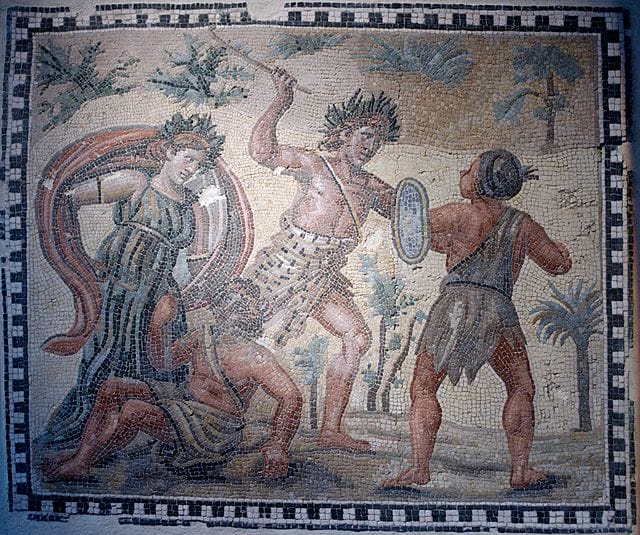
Key Takeaways
- Roman mosaics are intricate works of art that played a significant role in Roman culture, serving both functional and symbolic purposes.
- Mosaics were widely used in Roman architecture and were seen as a symbol of wealth and status.
- Beyond their aesthetic appeal, Roman mosaics offer a visual documentation of Roman life, beliefs, and cultural narratives.
- The influence of Roman mosaics spread far beyond the Empire’s borders, notably affecting art forms around the Mediterranean and in Byzantium.
- Roman mosaics have left a lasting imprint on the world of art, influencing modern art movements and continuing to inspire contemporary artists and designers.
Roman Mosaic: A Brief Overview
A Roman mosaic is a piece of art made from the assembling of small pieces of colored glass, stone, or other materials, known as tesserae. These tesserae are meticulously arranged to form patterns or pictures, creating intricate designs that often depict scenes from daily life, mythology, or historical events.
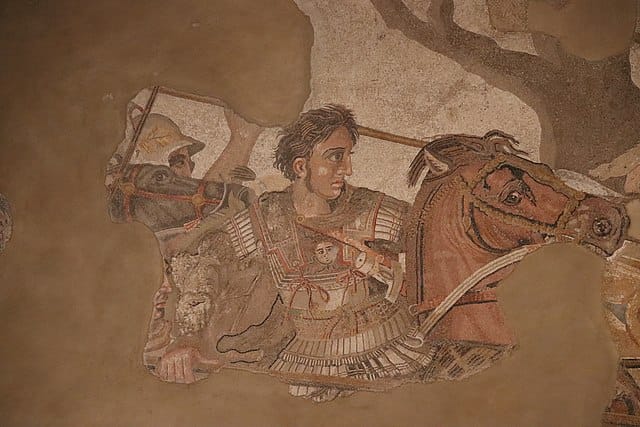
Roman mosaics, a vital art form in ancient Rome, played multiple roles – from serving as decorative elements in public and private buildings to communicating wealth, status, and cultural narratives.
The History of Roman Mosaics
Let’s delve into the fascinating journey of Roman mosaics across different historical periods, tracing their evolution and transformation over time.
Hellenistic Influences and Early Roman Republic (3rd-2nd Century BCE)
The origin of mosaics as an art form predates Rome, with early examples found in Ancient Greece. During the early Roman Republic, mosaics, influenced by Hellenistic patterns, primarily used pebbles and bits of seashells arranged into simple, geometric designs.
Late Republic and Early Empire (1st Century BCE to 1st Century CE)
As the Republic grew wealthier and more powerful, so did the sophistication of mosaics. Roman artisans began to employ tesserae, smaller and consistently shaped pieces made from glass, marble, or other stones. The introduction of tesserae allowed for more detailed and intricate designs and a wider range of color palettes.
High Roman Empire (2nd-3rd Century CE)
This period, also known as the ‘Golden Age of Mosaics,’ was characterized by complex, narrative-driven mosaics. These would typically depict scenes from mythology, battles, hunts, and aspects of daily life, gracing not just floors but also the walls and ceilings of public buildings and private houses.
Late Antiquity and Byzantine Period (4th-6th Century CE)
Following the fall of the Western Roman Empire, the use of mosaics continued well into the Byzantine period. During this time, mosaics often reflected religious themes, corresponding with the growing influence of Christianity.
Uses and Significance of Roman Mosaic
Roman mosaics were more than mere expressions of artistic creativity. They were also a vital component of Roman life, carrying both symbolic and functional significance that went beyond their aesthetic appeal.
- Architectural Enhancements: Roman mosaics were integrated into the architecture of public and private buildings, serving as aesthetic enhancements that added to the grandeur of Roman architecture.
- Wealth and Status: The complexity and craftsmanship involved in creating mosaics made them a symbol of wealth and status; affluent Romans often commissioned elaborate mosaics to showcase their wealth and cultural sophistication.
- Society and Culture: Roman mosaics often depicted scenes from daily life, mythology, and historical events, serving as visual records of societal norms and cultural practices of the time.
- Symbolic and Religious Significance: With the advent of Christianity, mosaics began showcasing religious scenes and symbols. In pagan times, they depicted gods and goddesses, serving both religious and protective functions.
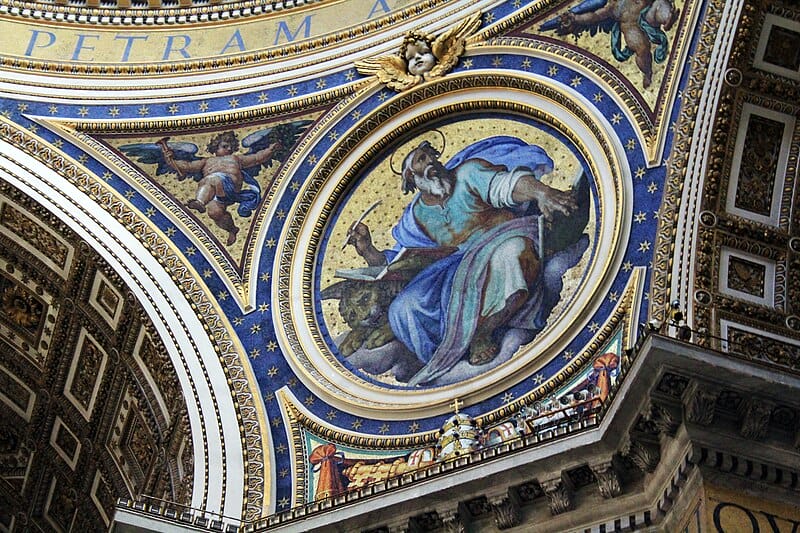
The Spread of Roman Mosaics Beyond Empire
Roman mosaics, an integral part of the cultural fabric of the Empire, were not confined to the city of Rome. They found their way into various provinces, leaving a lasting imprint on local art traditions and fostering a fascinating fusion of styles.
Roman Expansion
The conquests and expansive trade networks of the Roman Empire provided an avenue for the dissemination of Roman mosaics. As new territories came under Roman control, local artists and craftsmen were exposed to Roman artistic styles, including mosaics.
Mediterranean Cultures
The influence of Roman mosaics was particularly profound around the Mediterranean. In Spain, the Villa Romana del Casale, located on the island of Sicily, boasts an extensive and well-preserved collection of Roman mosaics, including the famous “Bikini Girls” mosaic.
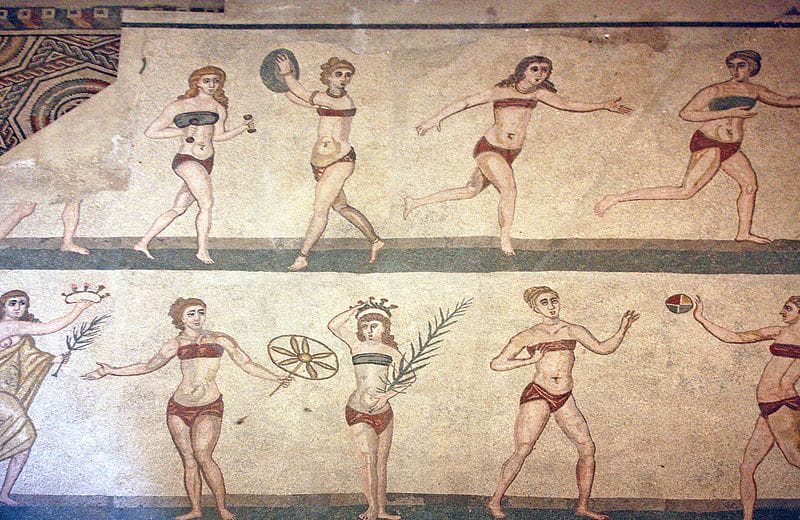
Byzantium
The Hagia Sophia in Byzantium (modern-day Istanbul), the capital of the Eastern Roman Empire, houses some of the world’s most exquisite examples of mosaics from late antiquity and the Byzantine period. These mosaics, while rooted in Roman techniques, often had a more symbolic and less realistic style, reflecting the changing aesthetics of the time.
Roman Mosaics and Modern Art
The influence of Roman mosaics extends far beyond the fall of the Roman Empire, impacting the world of art in profound and enduring ways.
Influences on Modern Art Movements
The detailed craftsmanship of Roman mosaics has influenced numerous modern art movements. Some art enthusiasts would say that Claude Monet, in his famous ‘Water Lilies,’ borrowed concepts such as the placing of colors side by side to achieve optical blending, quite similar to how tesserae were used in Roman mosaics.
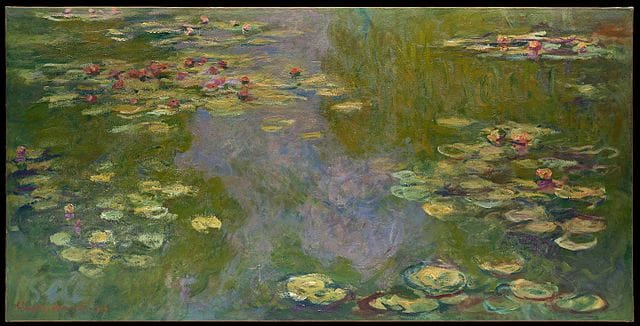
Continuation in Contemporary Architecture and Design
The technique of mosaic-making continues to be used in contemporary architecture and design. Antoni Gaudi‘s Park Güell in Barcelona is a fantastic modern-day example, with its serpentine benches covered in vibrant mosaic work.
In Chicago, Marc Chagall’s Four Seasons mosaic, a 70-foot-long, 14-foot-high ceramic mural in Chase Tower Plaza, showcases a vast range of styles, from traditional to abstract.
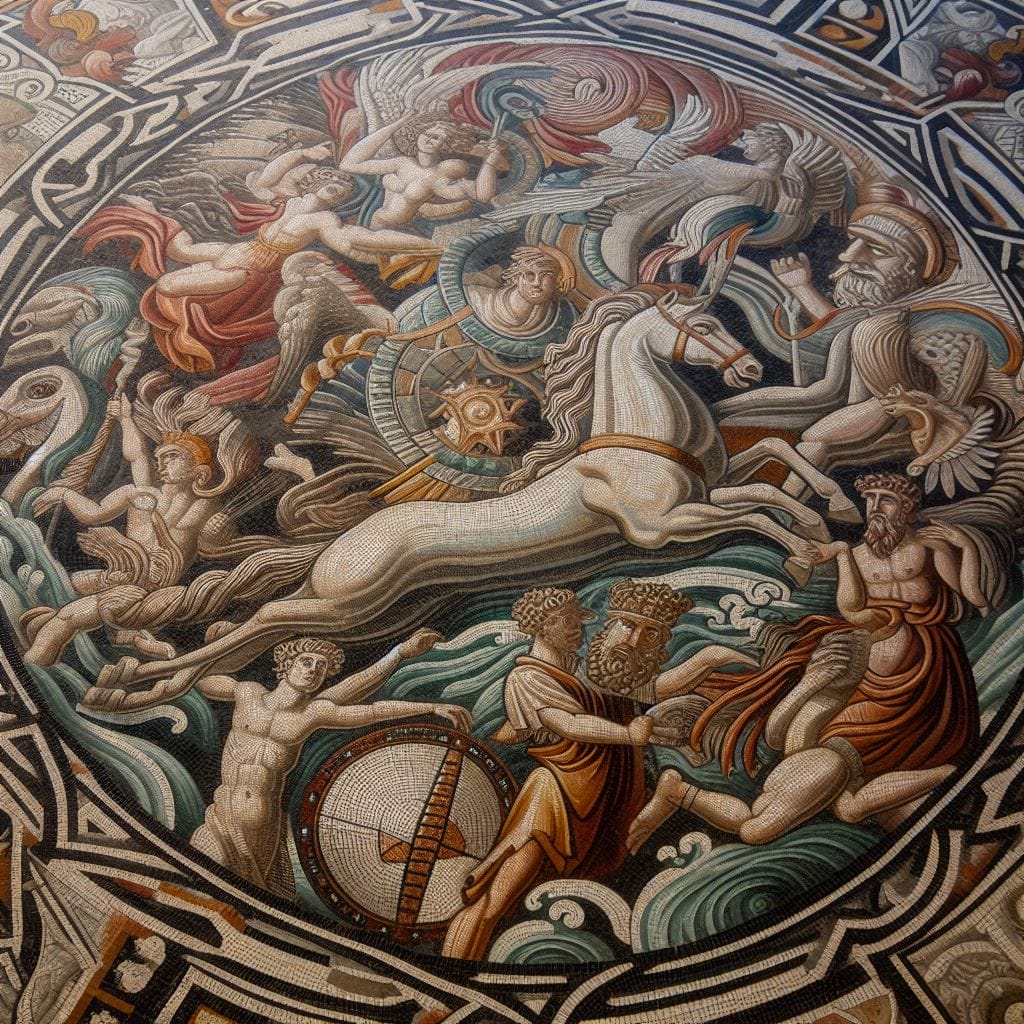
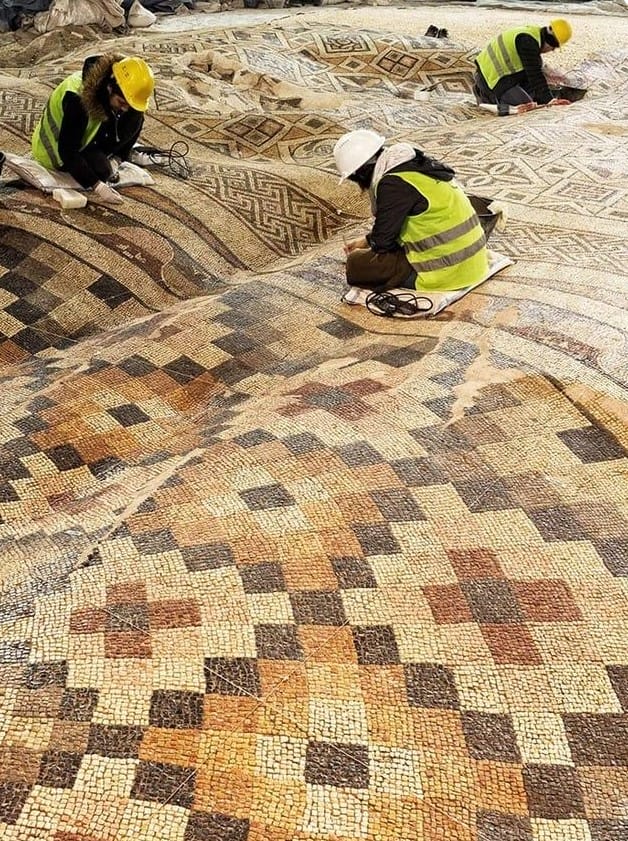
Summary
As our journey through the world of Roman mosaics comes to a close, we are left with an appreciation of their historical importance and an understanding of their enduring influence.
Today, we continue to draw inspiration from Roman mosaics, their age-old techniques finding new life in contemporary creations. They serve as a reminder that art is timeless, transcending boundaries of time and space and that creativity, once born, continues to inspire for generations to come.
